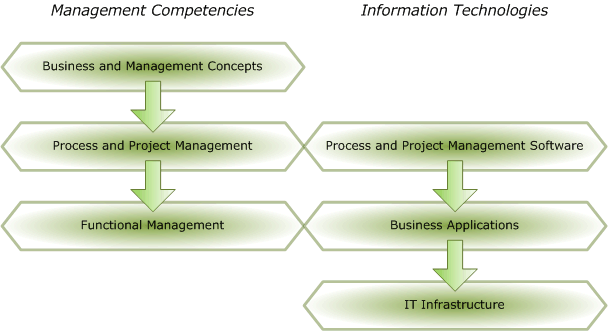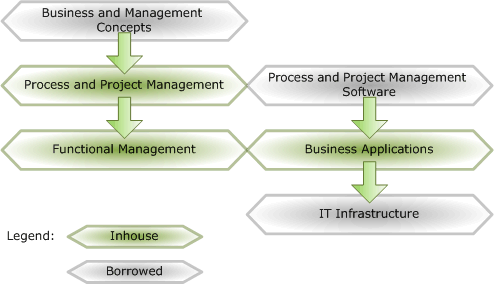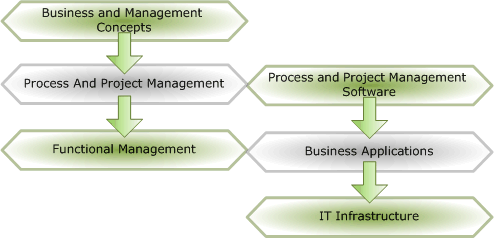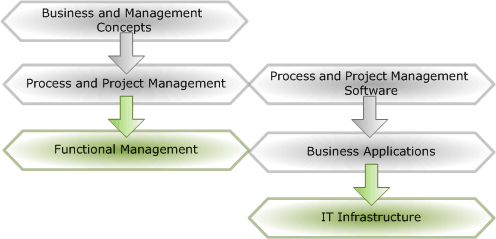(This post adds to proposed concept of management competence stack.)
Every business and management methodology emphasizes the necessity to engage the top management into the project and to gain company’s own competence.
But is it really achievable? Probably only the most powerfull companies can afford inhouse competencies across the management competence stack and associated information technologies:

Others shoud be pragmatic and combine inhouse and borrowed competencies. They should do certain things by themselves, engage external consultants for others and outsource some competencies. (The “inhouse competence” doesn’t imply that we develop a competence fully by ourselves - an external consultant or a trainer can provide a valuable jump-start. The question is whether we’ll rely on him forever or eventually will be able to go without him most if not all the time.)
Now which competencies should be better developed inhouse and which ones may be borrowed or leased? I’d like to propose the “rule of chessboard competencies”: if placed into the enterprise competence matrix above, borrowed competencies cells should neighbor inhouse competencies but not each other.
For example like this:

or like this:

but better not like this:

In particular, if ERP is implemented/maintained by external consultants then BPM competence should be better developed inhouse and vice versa.
The point of this rule is to keep borders between competencies under control. If an external consultant bringing competence A interacts with company’s employee possessing competence B which relates to A then everything is fine. If both competencies are borrowed then it may happen that A and B suppliers will pull the blanket over themselves. Both sides will appeal to you to judge but the lack of compentence will not allow you to decide wisely.
